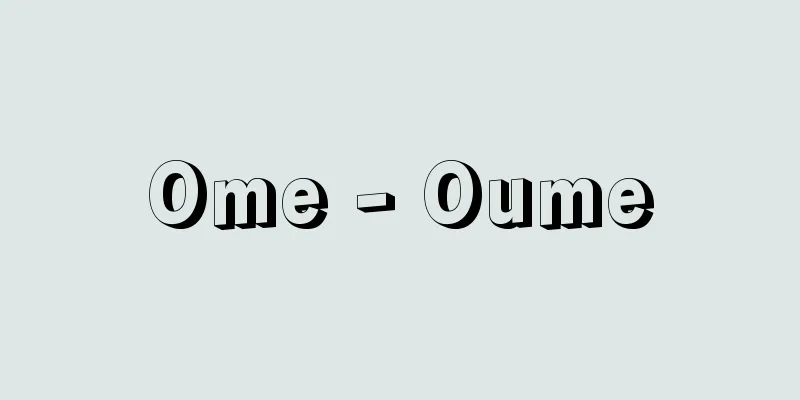Ki no Tsurayuki - Snowfall

|
A poet of the early Heian period. Famous for being the compiler of the Kokin Wakashu. He was also the author of the Tosa Nikki and editor of Shinsen Waka. One of the Thirty-Six Immortal Poets. His father was Nozomiyuki. After working as an uchiki (police official) writing records at the Imperial Court, he was finally promoted to the rank of Jugoi (Junior Fifth Rank) in his mid-40s, and thereafter served as a local official, including being appointed Tosa no Kami in 930 (Encho 8), but ultimately ended up as Mokkon no Kami (Proprietary Head of Carpentry) and Jugoi no Jo (Junior Fifth Rank). Although he was not blessed with such success as an official, he was a glittering figure as a poet. He left behind poems in the "Koresada no Miko no Ie no Utaawase" (Poetry Contest of Prince Koresada's Household) and the "Kanpyo no Onto Tokikisai no Miya no Utaawase" (Poetry Contest of the Empress's Palace) held as early as 892 (4th year of the Kanpei Era), but at the time he was not a particularly prominent figure. He was appointed as the compiler of the "Kokinshu" (compiled in 905), and upon the death of his cousin Tomonori, he assumed a leading role, and essentially determined the character of the "Kokinshu". He included 102 poems, the most in the collection, and wrote a groundbreaking kana preface, becoming a leading figure in the world of poetry in both name and reality. His achievements after the "Kokinshu" were remarkable, and as a master of folding screen poems, which became particularly popular around that time, he composed many poems, mainly in response to orders from the Daigo court. In 907 (Engi 7), when Emperor Uda visited Oigawa, he presented nine poems on nine themes and a preface, and in 913, he participated in the "Teijiin Poetry Contest". During this time, he received the patronage of Fujiwara no Kanesuke and Sadakata, and established himself as a poet. During his term as Tosa no Kami, he composed "Shinsen Waka", but after Emperor Daigo had already passed away, he added a preface to it and kept it for himself after returning to Kyoto. "Tosa Nikki" was written during his journey back to Kyoto from Tosa. From then on, he was mainly tasked with composing folding screen poems at the command of Fujiwara no Gonmon, and continued to do so until his later years. Tsurayuki's greatest achievement was the promotion and establishment of national culture through the compilation of the Kokinshu. He was deeply versed in both Chinese poetry and prose, and the Man'yoshu, and established traditional waka poetry as a self-conscious linguistic art, elevating it to an equal status with Chinese poetry, which was a public literary art. In the kana preface to the Kokinshu, he explains waka poetry from the two aspects of "heart" and "words," making it the first subject of theoretical study. His idea that the ideal of waka poetry is "heart and words combined" was further confirmed in his later Shinsen Waka. However, his own poems tend to be dominated by intellect and lack sentimental flavor. What is even more noteworthy is that he was the first to demonstrate the potential of literature in kana prose with the Tosa Nikki. [Yasuhiko Kikuchi] The cherry blossoms are falling as the wind blows, and waves rise in the waterless sky. "The Complete Collection of Japanese Classics: New Edition of the Tosa Diary - The Complete Works of Ki no Tsurayuki" edited by Hagiya Boku (1969, Asahi Shimbun Company)" "Selected Japanese Poets 7: Ki no Tsurayuki" by Ooka Makoto (1971, Chikuma Shobo) "A Study of the Biography of Ki no Tsurayuki" by Murase Toshio (1981, Ohfusha) [Reference] | |<First verse> People do not know the heart of their hometown. <Second verse> Flowers smell like the fragrance of olden times. People do not know the heart of their hometown. Flowers smell like the fragrance of olden times. Fixed characters (set characters): Characters (sounds) that specify a poem. People are Ki no Tsurayuki, Hishikawa Moronobu, and others. Ogura Hyakunin Isshu, 1680 (Enpo 8), National Diet Library possession . Ogura Hyakunin Isshu (35) Poet: Ki no Tsurayuki Source: Shogakukan Encyclopedia Nipponica About Encyclopedia Nipponica Information | Legend |
|
平安前期の歌人。『古今和歌集』の撰者(せんじゃ)として有名。また、『土佐日記』の作者、『新撰和歌』の編者でもある。三十六歌仙の一人。父は望行。宮中で位記(いき)などを書く内記の職などを経て、40歳代なかばでようやく従(じゅ)五位下となり、以後、930年(延長8)に土佐守(とさのかみ)に任じられるなど地方官を務めたが、最後は木工権頭(もくのごんのかみ)、従五位上に終わった。官人としてはそのように恵まれなかったものの、歌人としては華やかな存在であった。 早く892年(寛平4)の「是貞親王家歌合(これさだのみこのいえのうたあわせ)」、「寛平御時后宮歌合(かんぴょうのおおんとききさいのみやのうたあわせ)」に歌を残すが、当時はまだそれほど目だつ存在ではなかった。『古今集』(905成立)撰者に任じられ、従兄(いとこ)友則(とものり)の死にあって指導的な役割を果たすこととなり、『古今集』の性格を事実上決定づける。集中第1位の102首を入れ、画期的な仮名序をものして、名実ともに歌界の第一人者となる。『古今集』以後の活躍は目覚ましく、そのころからことに盛行した屏風歌(びょうぶうた)の名手として、主として醍醐(だいご)宮廷関係の下命に応じて多数を詠作した。907年(延喜7)の宇多(うだ)法皇の大井川御幸には9題9首の歌と序文を献じ、913年には「亭子院歌合(ていじいんのうたあわせ)」に出詠する。この間、藤原兼輔(かねすけ)・定方(さだかた)の恩顧を受け、歌人としての地歩を固めている。土佐守在任中には『新撰和歌』を撰したが、醍醐天皇すでに崩じ、帰京後序を付して手元にとどめた。『土佐日記』は土佐からの帰京の旅から生まれた作品である。以後はもっぱら藤原権門の下命によって屏風歌の詠作に従って晩年に至る。 貫之の最大の功績は、『古今集』撰進を通じて国風文化の推進・確立を果たしたことである。漢詩文、『万葉集』の双方に深く通じて、伝統的な和歌を自覚的な言語芸術として定立し、公的な文芸である漢詩と対等な地位に押し上げた。『古今集』の仮名序では「心」と「詞(ことば)」という二面から和歌を説明し、初めて理論的な考察の対象とすることになった。和歌の理想を「心詞相兼」とすることは、後年の『新撰和歌』でいっそう確かなものになっている。もっとも、彼自身の歌は理知が勝って、情趣的な味わいに欠ける傾向がある。さらに注目すべきは、『土佐日記』により初めて仮名散文による文芸の可能性を示してみせたことである。 [菊地靖彦] 桜花散りぬる風のなごりには水なき空に波ぞ立ちける 『萩谷朴校註『日本古典全書 新訂土佐日記――紀貫之全集』(1969・朝日新聞社)』▽『大岡信著『日本詩人選7 紀貫之』(1971・筑摩書房)』▽『村瀬敏夫著『紀貫之伝の研究』(1981・桜楓社)』 [参照項目] | |〈上の句〉人はいさ 心も知らず ふるさとは 〈下の句〉花ぞ昔の 香に匂ひける ひとはいさこころもしらずふるさとは はなぞむかしのかににほひける定まり字(決まり字):歌を特定する字(音)/ひとは紀貫之菱川師宣画[他]『小倉百人一首』 1680年(延宝8)国立国会図書館所蔵"> 小倉百人一首(35) 歌人/紀貫之 出典 小学館 日本大百科全書(ニッポニカ)日本大百科全書(ニッポニカ)について 情報 | 凡例 |
Recommend
Arabis albida (English spelling) Arabisalbida
…[Murata Gen]. … *Some of the terminology that me...
Ophthalmic nerve
The first branch of the trigeminal nerve. It contr...
Earthquake disaster - jishinsaigai
Also known as earthquake disaster. A general term ...
Raimundus de Peñafort (English spelling)
…Since 1229, it has had a permanent chair in the ...
Hofmann, Albert
…The official name is LSD-25. On April 16, 1943, ...
Turner, R.
…Other greenhouses, with walls on the north side ...
Stribog
… [Origin of the Gods] The Primary Chronicle (als...
Ayanishiki (English spelling) Martensia denticulata Harv.
This annual red algae resembles a reddish purple f...
Yogavāsiṣṭha (English spelling)
An ancient Indian philosophical text, also known a...
discount policy
In addition to these basic pricing policies, ther...
Iwakamushiri no Mikoto - Iwakamushiri no Mikoto
He is the grandson of Emperor Kōgen's son, Ohi...
Kii Mountains
A mountain range that makes up the Kii Peninsula ...
Francken II, F. (English spelling) FranckenIIF
…The subjects are diverse, including mythology, g...
International Management
...Then, as these newly independent colonies grew...
Cricket (Koorogi) - cricket (English spelling)
A colloquial name used to refer to insects in the ...









